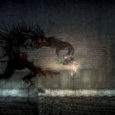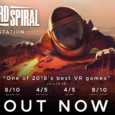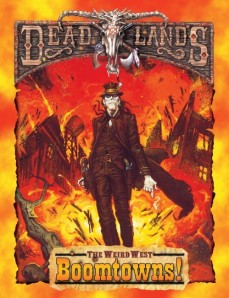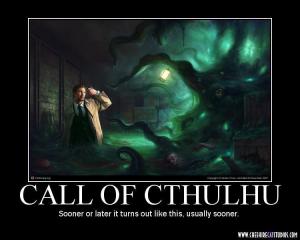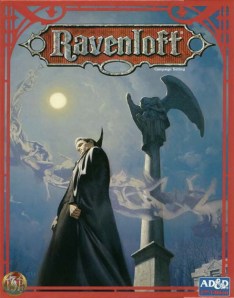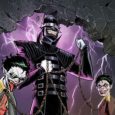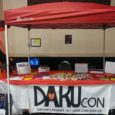 One of the experiences I feel is ubiquitous to being a nerd is playing a spot of Dungeons and Dragons. Friends gathered around a table surrounded by junk food, fingers rubbing nervously at multicolored die, and all trained on trying to figure out how to get their characters out of the jam they’re in. That’s what DnD should be. My first experience was 2 hours of creating a character sheet, bumbling through spot checks, and having far less fun than it sounded. I had been put off of the DnD idea for a while, but knew I wanted to try it again.
One of the experiences I feel is ubiquitous to being a nerd is playing a spot of Dungeons and Dragons. Friends gathered around a table surrounded by junk food, fingers rubbing nervously at multicolored die, and all trained on trying to figure out how to get their characters out of the jam they’re in. That’s what DnD should be. My first experience was 2 hours of creating a character sheet, bumbling through spot checks, and having far less fun than it sounded. I had been put off of the DnD idea for a while, but knew I wanted to try it again.
Then along came Card Hunter, a game that blended traditional tabletop gaming, card game mechanics, and charming yet simple storytelling. Could this really be the answer I’d been looking for?
One look at the visual style and overall vibe of Card Hunter and it’s difficult to not fall in love. You’re a new tabletop gamer with an inexperienced GM named Gary leading your story. As you and Gary bumble your way through your first campaigns, his brother Melvin is always watching over him and making him question his every move. And this story isn’t even part of the narrative. Card Hunter take the approach that if you’re playing a tabletop game, it should look like one, feel like one, and the scenarios are crafted around you playing this game. The story within the tabletop game is forgettable at best, but you yearn for the next quick quip from Melvin or mistake from Gary. It’s an interesting mechanic and one unique to this title.
The gameplay is part DnD, part Kingdom Hearts: Chain of Memories, with movement being dictated by tiles, but actions being dictated by randomly drawn cards. These cards determine how far you can move, your attacks, and your defense. It’s an interesting system I haven’t seen in a video game before, but it’s not difficult to understand. The cards in your inventory are determined by the items you have equipped to your characters, meaning you don’t have the fine granularity of card games like Magic the Gathering at your disposal. Maybe a weapon has two very strong blows, but three minor ones and a negative status effect, you can’t just pick and choose what you want. This aspect brings a new level of strategy to deck building that isn’t lost on me even if I’ve played very few card games.
The visual style looks exactly like a tabletop in a friend’s basement—a flat map with standees on top. This choice is a smart one and falls in line with the game’s hyperawareness that this is a game about playing a game. In a strange sense, seeing your characters represented by flat pieces of cardboard gives them much more charm. Over the years, we’ve seen characters go from cartoony to realistic, from pixelated to high def, and from 1 dimensional to 3 dimensional. I’ve seen very few games throw all that to the wind for a static, flat, unanimated look and they’ve mostly been terrible. Somehow, Card Hunter not only pulls it off, it makes me wish I could see more like it.
Card Hunter is a free to play, browser-based game and like most in its category, the developers are paid through in-game purchases. It’s possible to go through the game without ever paying a cent, though it gets harder to do so as you increase in level. If you do choose to purchase access to the Card Hunter Club, you get an extra item for every dungeon you loot. You can also purchase the game’s monetary currency, pizza, in order to buy more dungeons to raid. They even incorporate buying pizza into the story as Gary has a huge crush on the pizza girl Karen. Seeing these interactions is a treat and it’s nice to see the developers integrating the metastory into monetary purchases, as it makes the experience seem more natural and less disjointed.
The game also features a fun multiplayer aspect after level 5 in which your multiplayer party (separate from your single player party, though I’m not sure why) can go face to face with opponents of similar level. The formats are roughly the same as the single player adventures, though the maps are generally smaller and control points are more important. Overall, it’s a nice addition to an already entertaining game.
Verdict: Card Hunter deserves your attention, and not just because it’s free either. The gameplay is addictively fun, the metastory, though sparse, is funny enough that you want to hear more, and the deckbuilding and combat both make the game a must try. Even if you don’t like strategy games (and trust me, I’m with you), this is still something you should try. And why wouldn’t you, it’s free. So grab some Cheetos and your preferred carbonated beverage, pull up a folding chair, breath in the musty scent of old card table and well-worn manuals, and immerse yourself in Card Hunter.
It’s a friday night, all of your mates are out on the town, clubbin’ it up. But that isn’t your scene is it? You would rather do something geeky, maybe some paper mache dragon’s eggs, or finishing up the last few chapters of your favorite fantasy novel. I have another suggestion, grab a few friends, hunt down some d20’s and let’s Pen and Paper RPG it up.
I’ve been wanting to write this article for a while but kept on running into the best way to present it. You want to get new people into the hobby, introduce veterans to different systems, or just try something new then hopefully there will be something in this article that will appeal to the RPG geek in you. So here is a list of things that are always helpful to decide before playing your first Pen and Paper RPG.
1. ) Decide which type of PnP RPG you want to run or play – There is a wide variety of gameplay styles and genres in the pen and paper rpg market. Deciding which one you would like to try or which your group of friends would enjoy can be a difficult choice, or can be as easy as pie. One of the easiest ways to decide is pick a genre and then find a system that matches your style.
2.) Can’t decide on a genre? Here are a few of my favorite genres and settings, hopefully they’ll jump start some ideas.
Deadlands – This game is the epitome of the “Weird West” genre, set in an alternate universe USA were all sorts of foul creatures have risen up from beyond the stars, and some right out of the dirt. Deadlands has seen multiple printings, multiple systems have been used and for those of you new to roleplaying they even have a d20 version (D&D version more or less).
Pathfinder – Originally a Dungeons and Dragons setting, Pathfinder has evolved over the course of it’s lifespan to become what many people know as D&D 3.75. With rules that even the playing field for the characters and merge or simplify some of the more unwieldy rules Pathfinder is one of my favorite settings that have come out of the D&D OGL* era. I can tell you about the setting itself (Golarion), or we could talk about the society that criss crosses the world, exploring the hidden places, and forgotten dungeons (The Pathfinder Society). But maybe the picture of one of the coolest looking dwarves ever could give you just the tiniest of nudges in the right direction. If you are looking for somewhere to start look no further than Pathfinder.
Call of Cthulhu 1920 – Welcome to Horror, welcome to Arkham, to Dunwich. The Call of Cthulhu RPG line has always appealed to the part of me that loves the darkness in the world, the hidden corners and the horror of both the common and the mundane.
Dragon Age RPG – I love Dragon Age, it’s pretty plain and simple, I loved the first game, I loved the second game. Although I didn’t love them the same way I could not help but still enjoy the shit out of them. While I could tell you everything I love about this game and the system it is built on. In this case I would like you to watch a video, a video filled with the dulcet tones of Chris Hardwick, Sam Witwer, Kevin Sussman, and the ineffable Wil “Don’t Be a Dick” Wheaton.
Please enter the url to a YouTube video.Mutants and Masterminds – Superheroes, tights, one of the best superhero role playing games out there. The newer editions allow for so much creativity and freedom that it might seem a little daunting but with the right people it can end up being the superhero tale of a lifetime.
Ravenloft – “Ravenloft is a campaign setting for the Dungeons & Dragons roleplaying game. It is an alternate time-space existence known as a pocket dimension called the Demiplane of Dread, which consists of a collection of land pieces called domains brought together by a mysterious force known only as “The Dark Powers“. Each domain is mystically ruled by a being called a “Darklord“.” – Wikipedia.
Ravenloft is this and so much more, my first introduction to Ravenloft was the original module when I was but a wee lad, a few friends and I had found it in his father’s books and aspired to run a game, what ended up occurring was nothing like dungeons and dragons but was such a pure form of storytelling and imagination that I still think back on that first game to this day. That is where it all began for me, where my love of telling an engaging story and watching the looks on my friends faces transform from horror, to awe, and then to whatever emotion lay in between.
So, what does all this mean? There are many more numbers to that list of things I mentioned and we only got through the first two. Hopefully I did not bore you too much, and you’ll all come back to read numbers three through… Ummm whenever I run out of numbers I suppose.
Samuel Smith
Staff Writer
@samwasbornanerd





